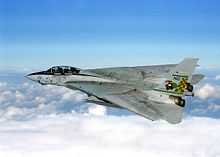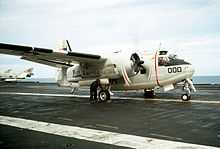Modex


A modex is part of the Aircraft Visual Identification System* which usually consists of two or three numbers used by Dept of Navy (USN and USMC) aircraft to identify a squadron's mission as well as a specific aircraft within a squadron. These numbers are always painted conspicuously on the aircraft's nose and also sometimes less conspicuously on other aircraft areas (i.e. fin tip, flaps). Two-digit modexes generally are used by shore-based squadrons while three digit modexes can be used by either shore or carrier-based units.
Use
The first number of a modex indicates the type of mission that the squadron is assigned to within the aircraft carrier's airwing. In addition, each operational airwing (non-training) is assigned a two letter TAIL code. Carrier-based USN/USMC aircraft which are members of airwings assigned to the Atlantic Fleet have tail codes beginning with the letter "A" (i.e. AA, AB, AC, etc.) while those assigned to Pacific Fleet airwings begin with the letter "N" (i.e. NE, NG, NH, etc.). USN training squadrons have single letter tail codes assigned (A through G).
References
Background: In carrier air wings, the first digit of a modex number indicates a squadron's mission type within the air wing. Modex numbers in the 1xx and 2xx series are assigned to strike fighter squadrons (VFA) which are focused on air-to-air duties and fly the F/A-18E or F/A-18F Super Hornet. Modex numbers beginning with 3xx and 4xx belong to strike fighter squadrons (also VFA) which are focused on air-to-ground (bomb delivery) tasks and fly the F/A-18C Hornet. 5xx side numbers were reserved for heavy attack aircraft squadrons (VA) flying the A-6 Intruder until the A-6 was retired. The 5xx side numbers are now assigned to the Electronic Attack (VAQ) Squadron (EA-6B/EA-18G). Modex numbers with the first digit of 6 are assigned to the Airborne Early Warning (VAW) squadron (600-605) flying the E-2C, and the Helicopter Sea Combat (HSC) squadron (610 and up) flying the MH-60S helicopter. 7xx modexes were assigned to the carrier's anti-submarine (VS) squadrons flying the S-3 Viking until the retirement of that aircraft. 7xx modexes are now assigned to the airwing's Helicopter Maritime Strike (HSM) squadron flying the MH-60R helicopter.
The last two digits identify an individual aircraft within a squadron with the aircraft numbered sequentially from x00 (or 610 in the case of the HSC squadron) up to the number of aircraft in that squadron with the number x13 often skipped. Some squadrons may skip numbers other than x13 if past mishaps resulted in the loss of an aircraft or crew with that number. Each squadron will typically designate an aircraft with its nose number of x00 (i.e. 100, 200, etc.) as the CAG's aircraft (called the CAG bird) and will paint its tail with squadron colors rather than with the subdued grey tone colors of the rest of the squadron's aircraft. Aircraft with a modex of xx1 (i.e. 101, 201, 701 etc.) are assigned to that squadron's commanding officer.
Marine aircraft are typically shore-based and use a two-digit modex. If USMC aircraft are assigned to a carrier air wing they employ the three-digit system used by the rest of the carrier airwing.
Land-based naval transport aircraft (VR) may use three-digit modex numbers but use of the last three digits of the aircraft's bureau number (BUNO) is also not uncommon. Carrier onboard delivery aircraft (VRC) also used BUNO-derived side numbers, but occasionally use the aircraft carrier's number (for example, 68 for an aircraft assigned to USS Nimitz: CVN-68).
Land-based patrol aircraft (VP) generally use a two-digit modex number.
See also
- Naval aviation
- United States Marine Corps aviation